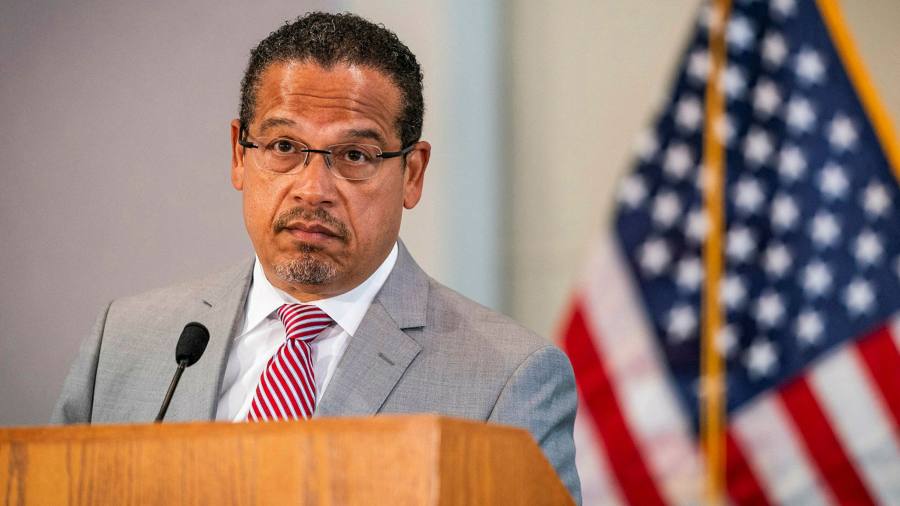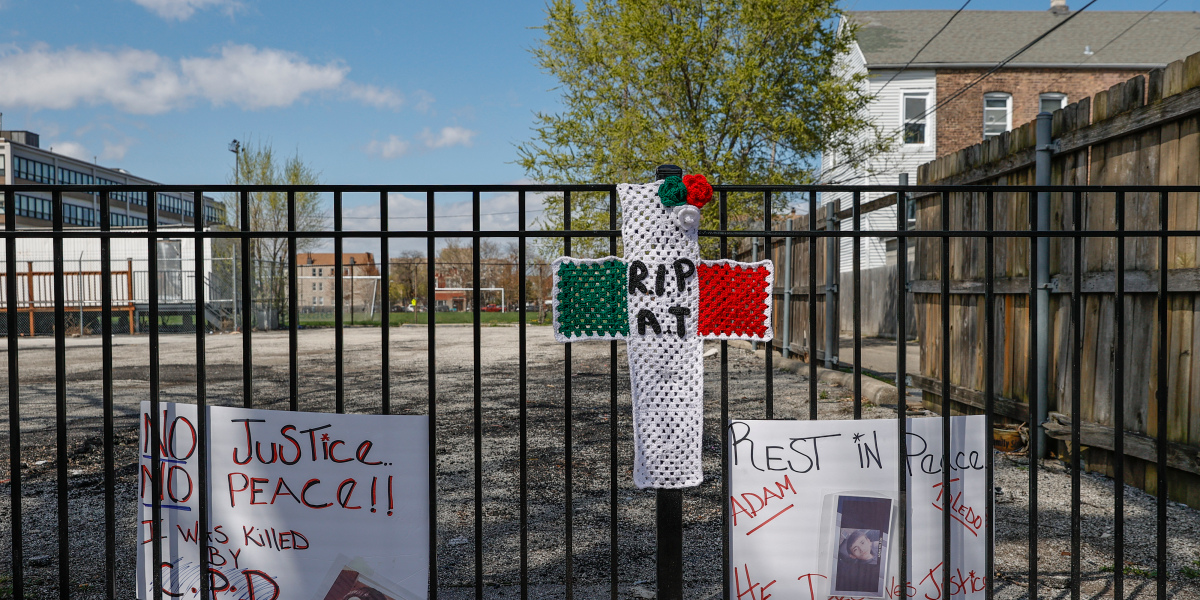[ad_1]
Bowie, TexasA black bull charges out the chute, and two riders give chase. The cowboy in front lassos the neck at a full gallop, slowing the bull just enough for rodeo heeler Whitney Monroe to maneuver her buckskin gelding into position and snare one of the bull’s hind legs with her rope, then release it with a snap of her wrist.
Dazzling as the riders are, the trained eyes of would-be buyers watching from the stands this July day are on the horses, tracking their agility, speed, and instinct. On her next turn in the outdoor arena, Monroe, 33, a former rodeo queen who jokes that she was “probably conceived on a horse,” guides her mount between a triangle of barrels. Whipping around the rims and bolting forward with a blend of finesse and raw power, she hopes the show will help fetch a high price when the bidding starts.
Held the first weekend of every month at a sprawling barn complex about an hour’s drive northwest of Dallas, the Bowie Texas Livestock sale has grown into one of the largest auctions of its kind in the United States, drawing a diverse array of American quarter horses and horse people: swaggering ranchers and young rodeo stars, wide-eyed first timers and hawkish traders who buy animals by the dozen. For most in attendance, the event is a vibrant, family-friendly ritual at the nexus of cowboy culture and capitalism.
“What makes this sale so unique is the diversity of the customers,” says Joel White, a veteran auctioneer who’s sold horses in more than 35 states. “Some people come and pay $30,000 or $40,000 for a horse, and we’ll sell lots of them for less than a thousand, so we have it all here.” The management, he adds, “has done a phenomenal job building this sale up from nothing.”
For all the pageantry and fancy catalog horses on offer, the Bowie auction is also a clearinghouse for animals at the bottom rung of the livestock business. Hundreds of horses and donkeys that pass through its gates each month will end up being processed in Mexican slaughterhouses. To animal rights activists, the auction is nothing more than a backdoor to the cruel and seldom-seen underbelly of the international horse trade.
“It’s a pit of despair,” says Tahlia Fischer, 38, director of All Seated In a Barn, a nonprofit in Bakersfield, California, who travels to Bowie each month to rescue horses and donkeys. “These animals are just objects in a system that only cares about profit.”
The auction house was a run-down operation when Michael O’Dwyer—a farmer from Tipperary, Ireland, with five decades of experience working with cattle and horses— bought it in 2015. His family has revived the business with an expanded barn, glossy catalog, and brisk online sales—along with an unexpected boost from the COVID-19 pandemic.
In Texas, horses are classified as livestock, not pets. Because livestock was deemed critical to the food supply in the state, and other states placed more stringent restrictions on public gatherings, the Bowie auction was the only major auction in the country that remained open at the height of the pandemic. With public spaces closed, demand for recreational horses surged. Horses flooded in from as far as Florida and Pennsylvania, and the volume of sales doubled from 250 to more than 600 in a single day, compelling the O’Dwyers to make it a two-day auction.
The pandemic “boosted our horse economy to the highest it’s been in 50 or 60 years,” says David O’Dwyer, the sale manager. “It’s been extremely high.”
Saturdays are for higher-dollar performance animals: ranch horses with a nose for herding cattle, barrel racers raring to set new records, trusty mares for long trail rides or training children. Sundays feature the open sale, where hundreds of horses and donkeys, often in poorer condition, are sold “as-is” in a rapid-fire parade. Many of these animals are picked up for cents on the pound by kill buyers who ship them to Mexico for slaughter. (In the U.S., it’s illegal to sell horses for human consumption but not against the law to eat horse meat.)
Although most revenue at Bowie comes from consignment sales, O’Dwyer says he ships animals to meat processors in Mexico every week. As many as three trailers each transport 30 to 40 horses and donkeys that “are worn out and nobody wants,” he says, adding that it’s more humane to put them down than leave them to neglectful owners. An astute businessman, he manages to accommodate both the seasoned traders who do the bulk of the buying and the rescuers trying to thwart them.
A mare named Moonshine
At noon on Saturday, the selling begins, and a team of three auctioneers take turns on the pulpit microphone to keep the pace. White, whose waxed mustache flares like a pair of longhorns, settles into an easy rhythm and leavens his folksy chant with humor (“If you wanna raise a good kid, get ‘em a good horse, or they might become a thug on the corner”) and frank observations about a horse’s potential. Down in the ring below, riders shuttle the horses back and forth, flanked by a pair of spotters who relay signals from bidders in the stands in a fluid, time-worn choreography.
“The real pleasure,” White says, “comes when I have a satisfied seller who gets more than they expected to get and is happy with the job I do.”
Lot number 30, a nine-year-old black mare named Moonshine, sells for $8,500, a thousand dollars above the minimum asking price. But it’s a “bittersweet” moment for owner Kim Eisen, 52, who raised and barrel-raced her competitively. She says her father sold his land, and the family needed to downsize their herd because of higher feed costs linked to ongoing drought. In a booth outside, in-house photographers take a souvenir portrait of Eisen and the mare.
Out in the sun-blasted parking lot, nine-year-old rodeo phenom Kutter Farrington takes a break from showing his father’s horses to practice his roping on a plastic bull. “I’ve been roping since I was three, so I’m real good,” he says. A lean, older cowboy walks up to teach him a trick, after which the youngster, ranked number two in the world for his age group, challenges him to a contest. The cowboy wins, but Farrington has a good excuse: His right arm’s in a cast after a bull bucked him off two weeks earlier.
Back on the auction floor, Monroe puts her buckskin gelding through a final flourish to boost the sale price. She back-walks, spins, and stops on a dime; the horse ends up selling for $4,200. Later in the afternoon, her second catalog horse, a sorrel mare, falls well short of her asking price of $4,000. Monroe shakes her head: No sale.
“I just couldn’t let her go for that,” she says, walking back to her trailer. “But we’ll be back here soon enough.”
The Sunday rush
On Sunday morning, Fischer and volunteer Hillary Novak are perched on the edge of their seats in the top rows of the sale barn. Their list has grown from 20 to 28 animals—including a must-have blue roan that was stolen from a holding pen at a previous auction. A familiar cast of traders and kill buyers who ship directly to Mexico are filing into the barn. Fischer points out a couple of them whom she says like to bid up the price of a horse if they know she wants it, just to spite her.
With hundreds of animals to sell, the auction runs at breathless speed. Horses and donkeys of all ages, sizes, and conditions are sent onto the floor, snapped up in a flash, and whisked out the door. Fischer goes on a bidding streak, buying three horses in quick succession while Novak livestreams on Instagram and tracks the multiplying donations.
For every horse they rescue, the auction house and traders buy many more for slaughter. Charlie Carter, a gruff kill-pen owner from Stroud, Oklahoma, boasts that for years, he was the top horse buyer in the country, shipping hundreds of animals to meat processors every week, until the last U.S. plant was shut down in 2007. These days, he rounds up bottom-tier horses and tries to give them a second chance by reselling them online. “Anything that rides that we can do something with, we try and do it,” he says, “but the rest gotta go somewhere,” referring to the slaughterhouse.
Derrick Moody, a 37-year-old African American trader from Hearne, Texas, is blunt about the lure of fast money. Two years ago, he bought his first horse for $400 and sold it the next day for $1,200. “After that I was hooked,” Moody smiles. “Now I dream of horses.” He and his twin brother, Eric, travel to eight auctions around the Southwest each month and earn a steady living flipping an average of 100 to 150 horses.
Moody grew up riding horses and competing in rodeo events where grit and skill earned respect. A stream of acquaintances walk up to swap news and crack jokes. “Everybody here is nice, polite, treats you the same,” he says, leaning against a horse pen, hands framing one of his silver champion buckles.
That sentiment is shared by Jesus “Chuy” Mendez , a Mexican American vaquero from El Paso, Texas. Mendez runs a cattle ranch near the border and spends time on both sides trading horses with his eight-year-old son, Jesus Jr, in tow. The father-son duo has brought four seasoned ranch horses to Bowie, and they take turns putting them through the paces on the auction floor in a whirling blur of matching indigo denim.
The recovered blue roan Fischer has her sights on finally comes up for sale. She insists she’ll pay “whatever it takes” to bring him home and has enlisted a proxy buyer to keep rival traders from clocking her interest. A bidding war breaks out that sends the price climbing to $5,000, $6,000, $7,000, until a miscue between Fischer and her proxy buyer results in the horse’s sale to another bidder for $7,500. The error has her seething under the brim of a baseball cap.
But Fischer is relentless. After repeated phone calls, the buyer agrees to sell her the horse. By the time the auction closes at 5 p.m., she’s bought every one of the 28 horses and donkeys on her list and raised $68,000 on social media with help from B-list celebrities—enough to cover all her costs. Now begins the laborious work of finding homes for the animals, some of the roughly 250 in Fischer’s care network.
“I wish I could stop all of them from being shipped to slaughter, but what else is there, ” she says, lamenting the lack of rescue resources, and the burden this places on small-time activists faced with a deluge of horses in need.
[ad_2]
Source link


